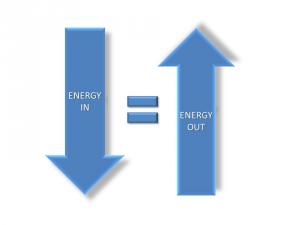Module Overview
How does the balance of incoming and outgoing energy affect Earth’s climate?
The balance between incoming energy from the sun and outgoing energy from Earth ultimately drives our climate. This energy balance is governed by the first law of thermodynamics, also known as the law of conservation of energy. This law states that energy can be transferred from one system to another in many forms, but it cannot be created or destroyed. Therefore, any energy “lost” during one process will equal the same amount of energy “gained” during another.
When averaged over the course of a year, the incoming energy from the sun and outgoing energy from Earth are nearly in balance, keeping the average global temperature within the narrow range that supports and sustains life as we know it. In the following pages, you will learn about this balance between incoming and outgoing energy and how changes in this balance affect Earth’s global average temperature.
In this module you will learn about energy, the ultimate driver of climate. You will learn about Earth’s unique atmosphere and the role it plays in moderating our climate, along with the balance of incoming energy from the sun and outgoing energy from Earth.
When you complete this module, you should be able to
- Compare the composition of Earth’s early atmosphere to the present composition.
- Compare and contrast the layers of Earth’s atmosphere.
- Explain the relationship between wavelength and frequency of electromagnetic waves.
- Analyze the sun’s electromagnetic spectrum to explain why different percentages of wavelengths reach Earth.
- Use two fundamental laws (Stefan-Boltzmann law and Wien’s law) to explain the correlation between temperature and radiation for the sun and Earth.
- Describe the three ways that heat energy is transferred within Earth’s atmosphere and between its surfaces and the atmosphere.
- Calculate Earth’s global radiation balance by analyzing the amount of incoming solar radiation and outgoing terrestrial radiation.
- Explain why some greenhouse gases are more effective absorbers of infrared radiation.
- Explain the relationship between Earth’s energy budget and the global average temperature of Earth.
- Explain how the greenhouse effect works.
- Differentiate between the natural greenhouse effect and an amplified greenhouse effect.
You may also download the 21-page PDF of this module.


